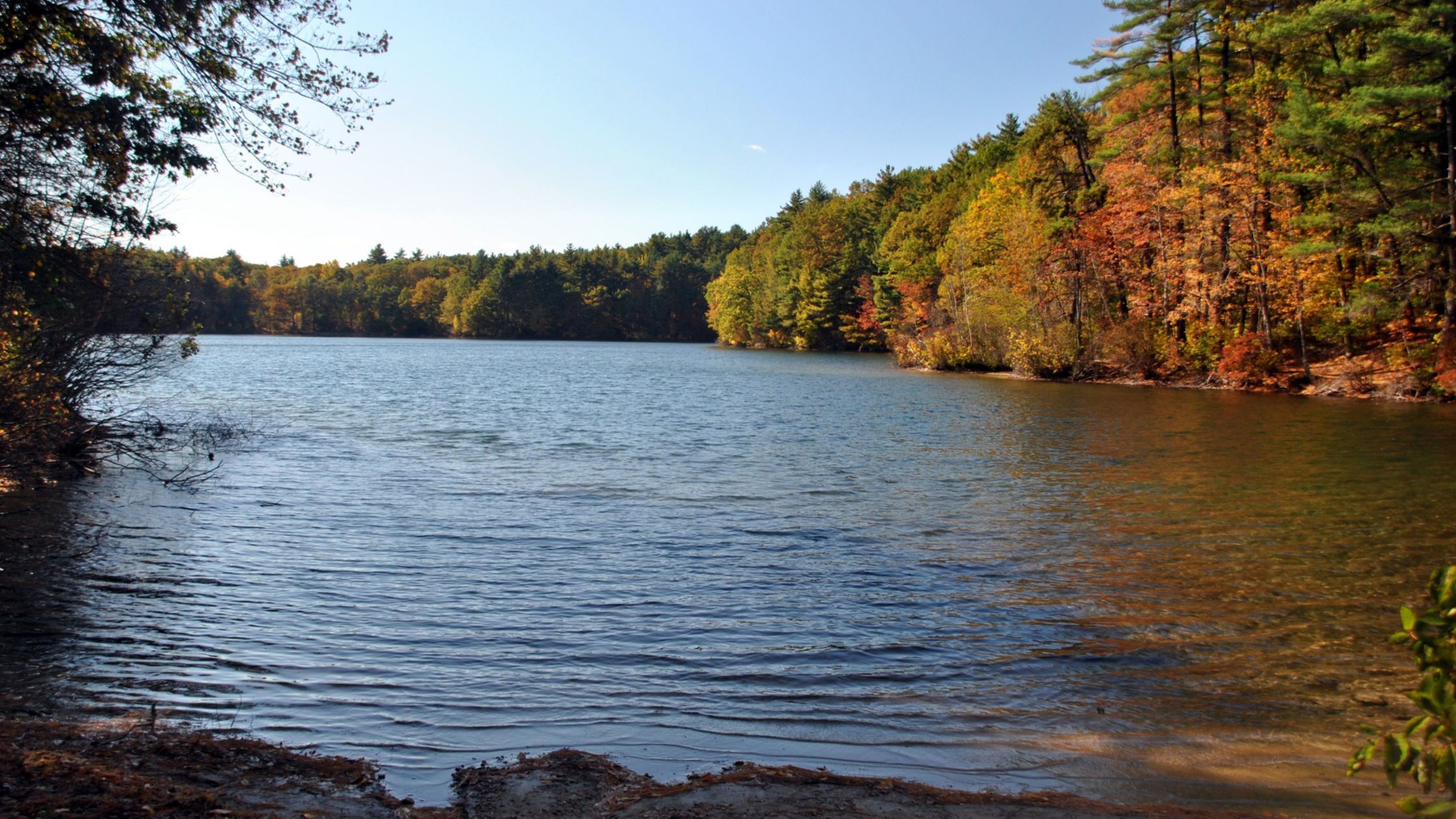Digging Deep into Walden Pond’s History
Walden Pond in Concord, Massachusetts is perhaps best known as the site of Henry David Thoreau’s experiment in living simply. However, the Walden Pond of Thoreau’s day and the Walden Pond of today differ vastly from each other. To find out exactly how different and to investigate how our increasingly industrialized world has affected this historic pond, Curt Stager from Paul Smith’s College in New York, USA and some colleagues set out to conduct experiments of their own.

To gain insight into the past, the team extracted six sediment cores of different lengths from areas of the pond that had never before been studied. The layers of sediment in these cores provide a temporal record of Walden Pond’s changing environment. Using 14C, 210Pb and 137Cs isotope analysis, the researchers could date the longest cores and examine whether there had been any disturbances in the sediment. Several of the cores showed very little disturbance even though some of the deepest layers from the WAL-15 core date back to the 1750s. In addition to being able to date the various layers of sediment, the team found surprising evidence of atmospheric thermonuclear bomb testing shown by a peak in 137Cs isotope measurements from 1963.

Next, the authors examined the sediment cores for variation in two different types of microscopic algae, diatoms and chrysophytes. In sediment layers dating from the 1920s onwards, there has been a notable increase in planktonic Asertionella and Synedra diatoms as well as an increase in the number of chrysophytes. Using precipitation and temperature recordings taken since 1880 in the nearby town of Bedford, Massachusetts, the team found that the pond’s most drastic ecological changes pre-date the climate variability that began in the 1960s. Curt Stager and his colleagues do not believe that the increase in these planktonic algae was caused by changes in the climate but instead believe it was the result of a rise in cultural eutrophication, the process whereby a body of water becomes enriched by dissolved nutrients from land runoff, which ultimately causes the excessive growth of dense plant life.

In a twist of irony, it seems that tourists making pilgrimages to Thoreau’s cabin have played a significant role in the pond’s cultural eutrophication, as the increase in Asterionella and Syndera since the 1920s corresponds with the increase in the pond’s widespread recreational use. With the pond being open for water sports it’s even possible that swimmer’s urine contributed to increases in phosphorous levels allowing algal growth! In better news, the authors observed that the levels of Asterionella and Synedra have remained steady since the late 20th century and believe that this leveling off may be due to ongoing conservation efforts to preserve the pond for future generations. With these efforts, the authors conclude that Walden Pond has entered a new ecological state that is unique from not only the past 1800 years, but also from most of its previous existence.
While the pond may no longer be the remote sanctuary it once was, its cultural significance has not waned. The work by Curt Stager and his colleagues highlights the very real anthropogenic changes experienced by this historic natural feature and the need for continued preservation efforts to ensure the longevity of Walden Pond as an essential American landmark.
References:
Stager JC, Wiltse B, Hubeny JB, Yankowsky E, Nardelli D, Primack R (2018) Climate variability and cultural eutrophication at Walden Pond (Massachusetts, USA) during the last 1800 years. PLoS ONE 13(4): e0191755.
Feature Image: angela n. flickr CC-BY
